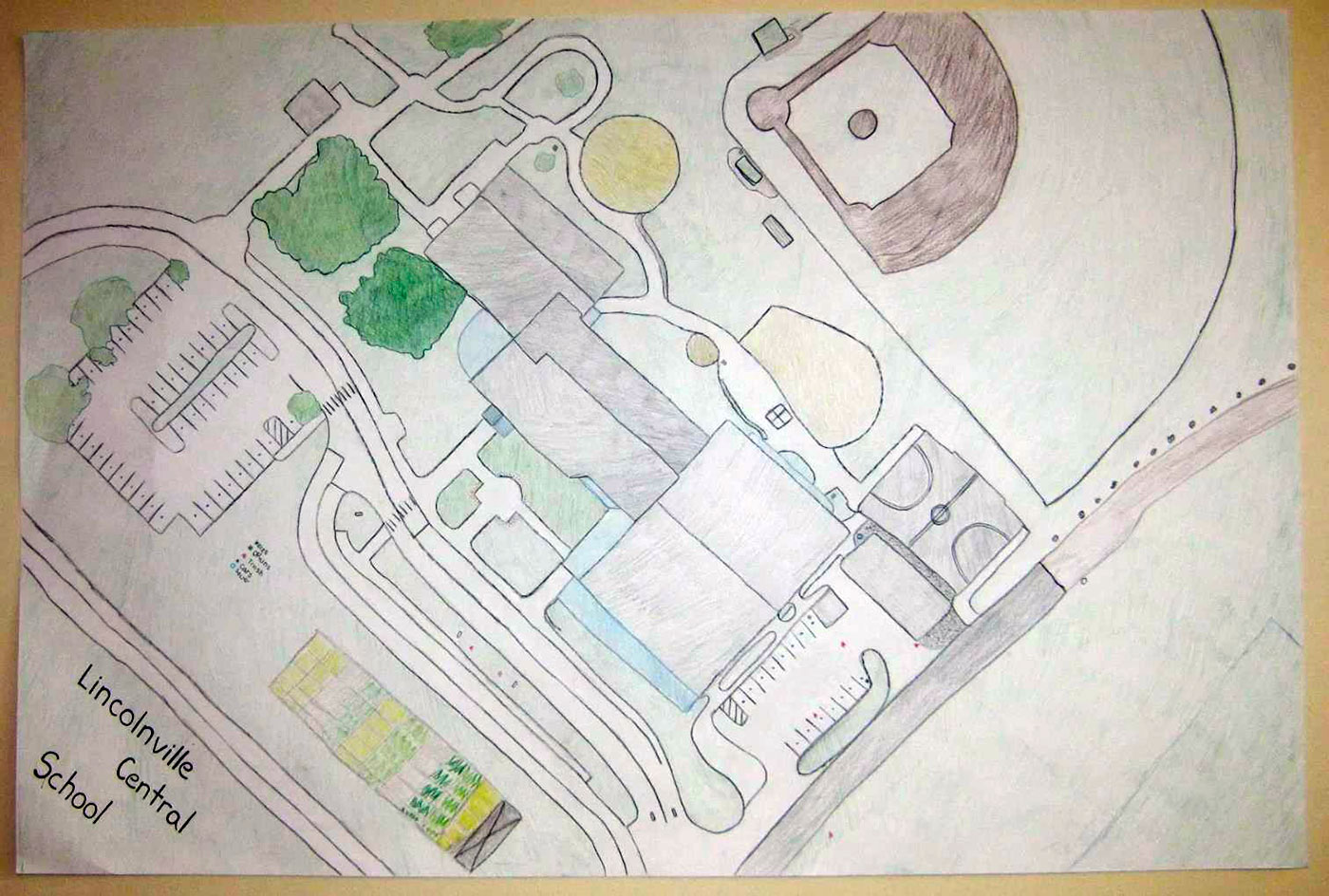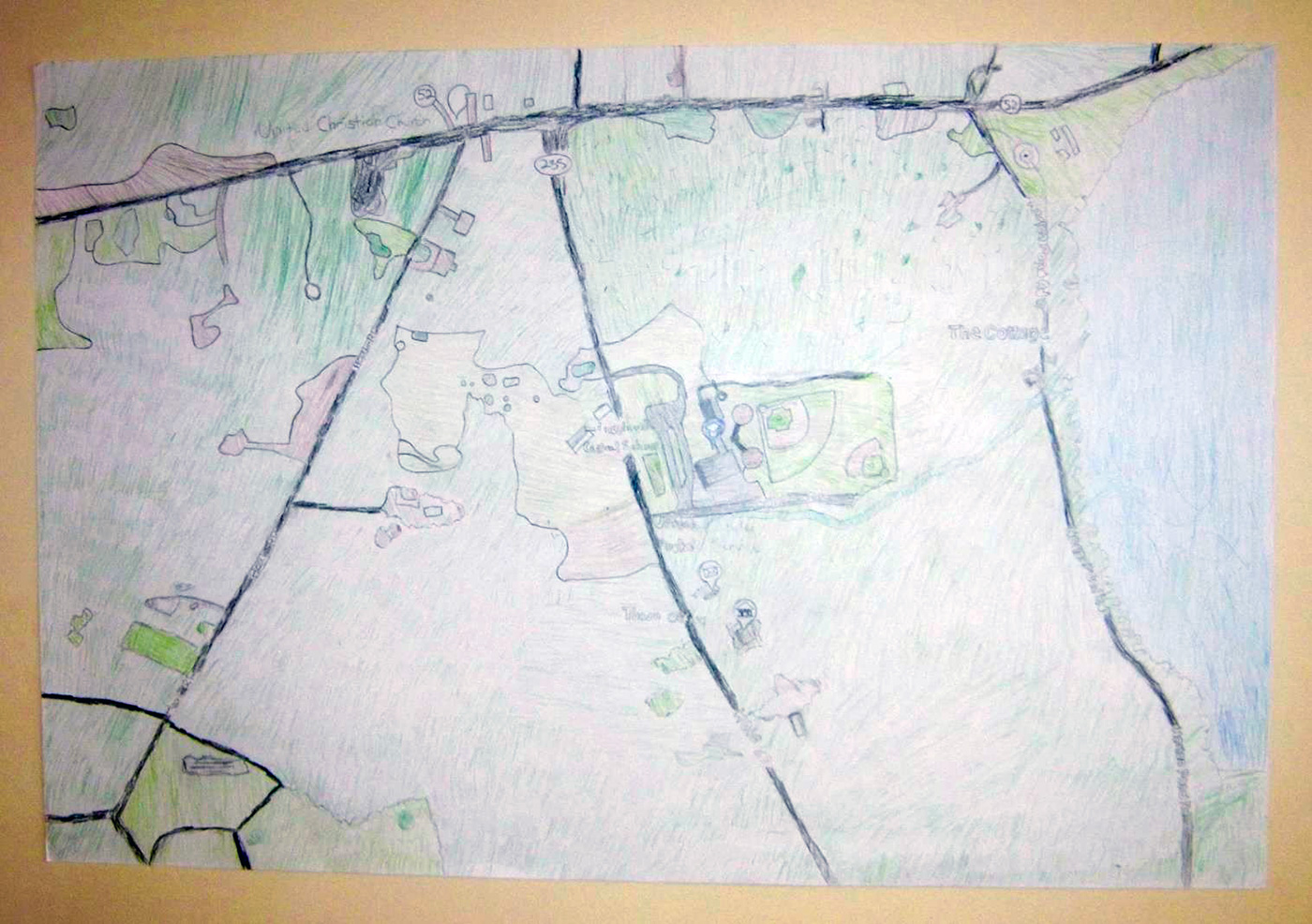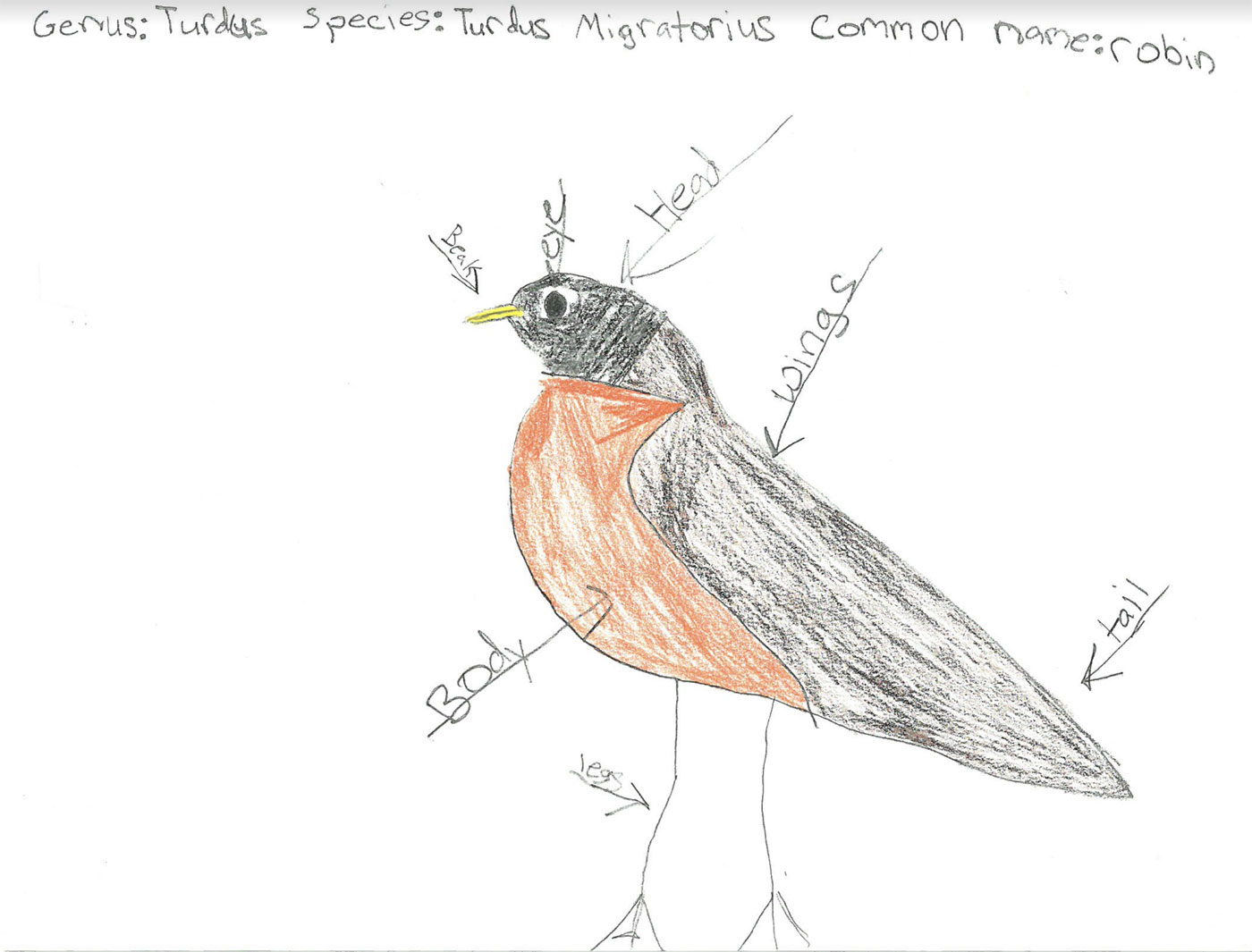Lincolnville Central School seventh grade students have been studying our local watershed all year. We aimed to answer three questions:
- What is a watershed?
- How is a watershed important to our community?
- What animals do we think live in this area?
We went outside and recorded our observations during art class and used them to create a mural of the Megunticook Watershed with the help of local artist Randy Fein. This activity opened our eyes to the remarkable number of organisms that depend on this watershed for their survival. Our mural, which was created by students in grades four through eight, is permanently hanging in our school where it will inspire future students to study and protect the watershed.
Seventh graders wanted to learn more about how our school might be affecting the local watershed. With the NRCM grant we surveyed the school grounds, created two maps (one of just the school grounds and the other a wider angle showing Norton Pond), recorded the organisms found, and created a field guide. We then investigated possible pollution sources and added these to the map, and tested the water quality of Norton Pond to compare with last year’s data.
We utilized the artistic skills of students in the class to make two hand drawn maps. One was a close up of the school grounds showing areas with trash and possible pollution sources while the second showed a larger area to include Norton Pond’s location relative to our school and the stream that runs between the school grounds and the pond.

Students’ drawing of Lincolnville school grounds

Norton Pond’s several houses and drain pipes surrounding it that could cause pollution. The pond has a buffer zone with vegetation like trees and shrubs that provide shade over the water. We observed ducks, loons, snails, butterflies, caterpillars, spiders, and a chipmunk on or near the pond. The pH, nitrate, and phosphate levels were all suitable for wildlife. The dissolved oxygen levels, however, were low, which could be harmful for fish if not remediated. Adding plants to the water such as hornwort, parrot’s feather, or anacharis could add oxygen to the water and prevent algae growth. The area around Norton Pond is generally well kept, but there are some potential pollution sources to be monitored.

A robin, one of the many inhabitants of the local watershed, as drawn by a Lincolnville student
We found a lot of trash on the school grounds near the detention pond including plastic cups, bottles, bags, wrappers, Duplo blocks, cigarettes, cans, and rubber. It’s possible that cars and buses might leak gasoline, oil, or coolant, which could enter the watershed through the drains by the parking lot.
Overall, we enjoyed learning about our local watershed and hope to use our knowledge in the future to help us make good decisions to protect and preserve the Megunticook Watershed.
—by Nancy Stevick











Leave a Reply